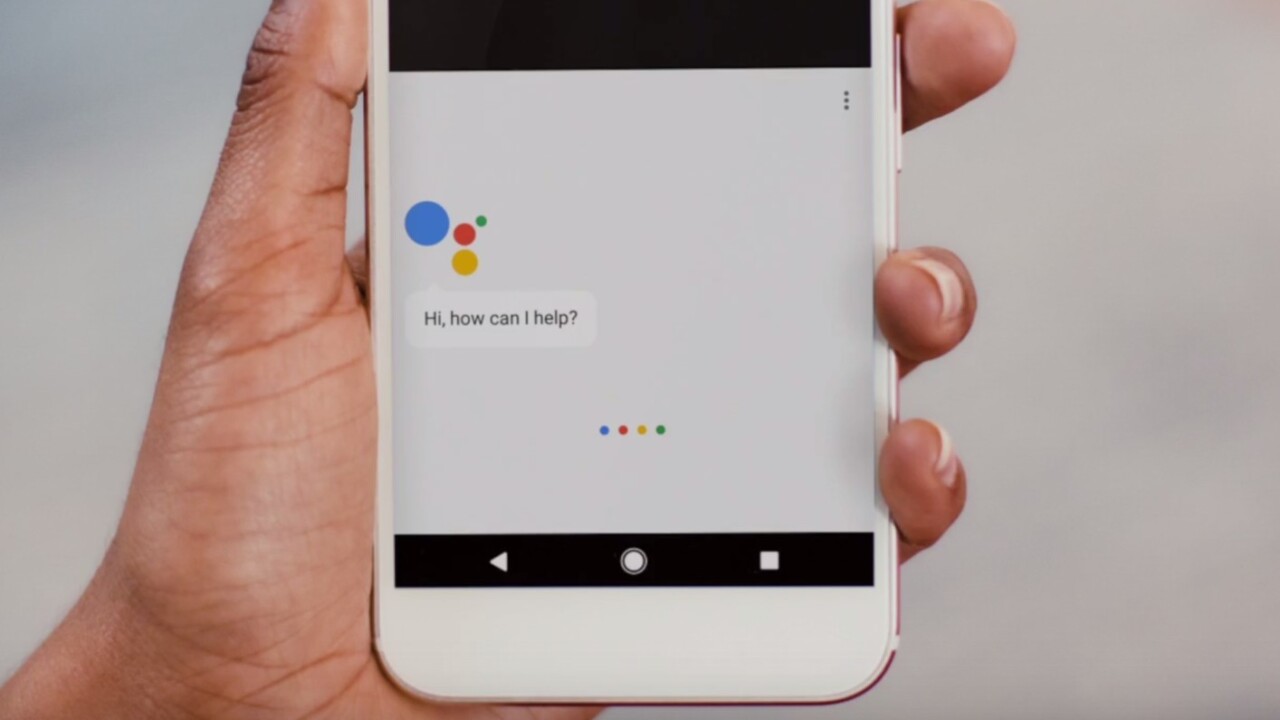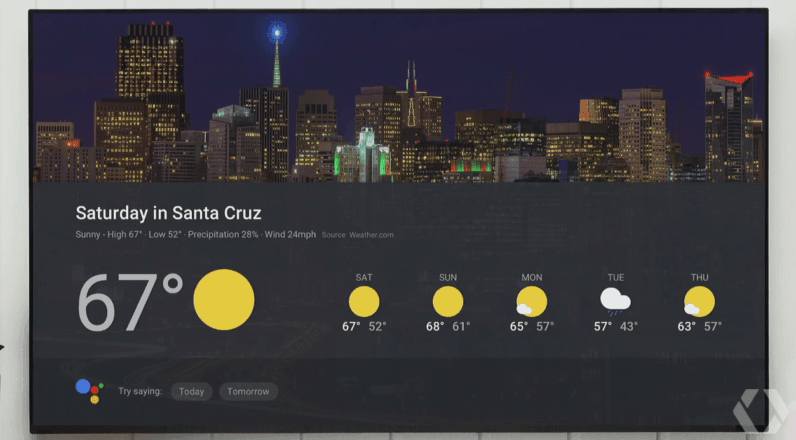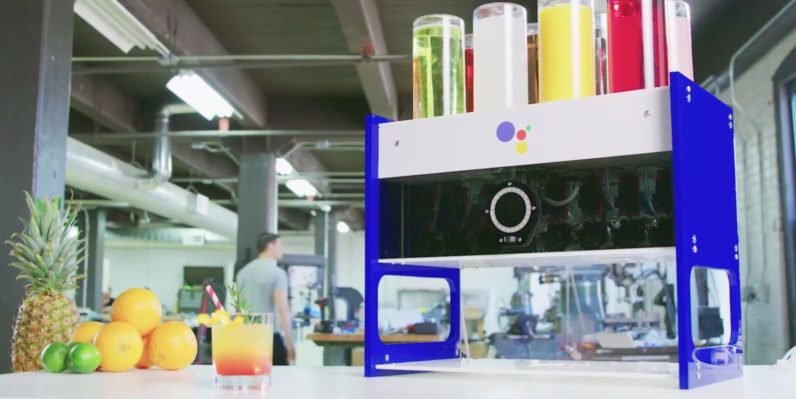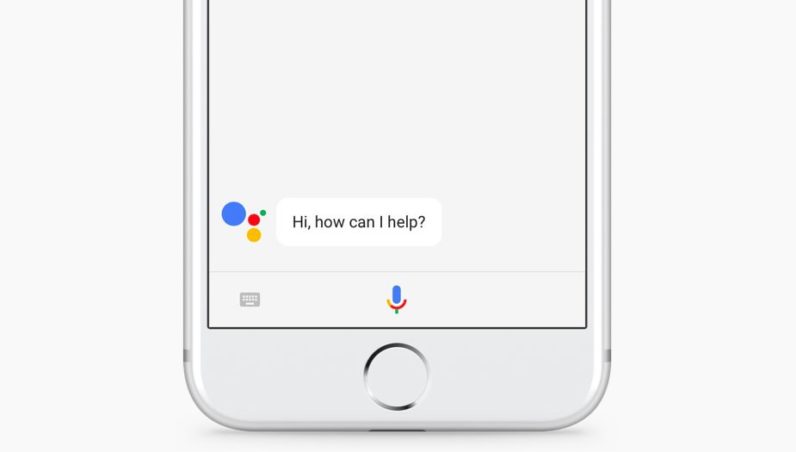
The Google Assistant was the star of Google I/O for the second year in a row. Now that the technology has been available for well over a year, Google is adding numerous features that will expand the AI’s reach in Google’s quest to dominate your home.
In other words, expect to be talking to your phone a lot more in the coming years.
Visual responses with Chromecast
Getting voice answers Google Home or your phone is fine and all, but sometimes it helps to have a visual aid. Google is leveraging Chromecast to do just that.

Now if you ask the Assistant something like “what’s the weather” or “what’s on my calendar,” it can display answers right on your TV. Having information displayed on a screen is allows the Assistant to provide a bit more information and context, such as extended forecasts or future appointments at a glance. And considering I’d imagine most people who own Google Home also have a Cast-enabled display, this should be easy to set up.
Third-party features to take on Alexa
Google Home’s biggest weakness against the Echo (or the Assistant vs Alexa) has always been its lack of third party support. Alexa’s Skills SDK allowed developers to integrate Amazon’s assistant into a variety of hardware. Then Google announced the Assistant is getting its own SDK, and the playing field became a lot more level.

Apps can now integrate the Assistant into their own experiences, and hardware can leverage the Assistant’s intelligence for hands-free controls and tighter integration with your smartphone and Google services. Expect more devices and apps to show up with support with the Assistant in the nearish future.
You can make phone calls with Google Home
Google Home will be able to make direct phone calls to your contact list, no phone or special app needed. That should come in handy those times your hands are occupied and you need to make a quick phone call. This feature is rolling out in the coming months to the US and Canada.
It will help before you even ask
A human assistant doesn’t just remind you of meetings and appointments when you ask them. They’ll let you know when one is coming up ahead of time. Google Home will soon get that ability through Proactive notifications. But don’t worry, the Assistant wont just loudly alert you about an upcoming meeting in the middle of the night; the unit will light up to let you know it has something to say, but you have to manually make it read out the notification.
Google Lens brings AI to the camera
Google Lens was arguably the coolest announcement at I/O, an impressive display of how far Google’s vision AI has come in the past few years. You could, for instance, point your camera at a flower to find out its name. You could point it at a poster for a concert to reserve tickets. You can use it to translate foreign languages. You can aim at a restaurant name to get menu information.

You get the picture. Basically, as long as Google can recognize what’s in a photo – which it’s gotten remarkably good at doing – it can perform pretty much any of the actions you could with a text search. Which is to say, a lot.
It’s also going to make things a bit more difficult for Android manufacturers looking to implement their own assistants. It’s hard to see why someone would choose Bixby over the Assistant, for instance.
It’s on iOS
Just as rumored, the Assistant arrived on iOS this week, providing the first real competition to Siri on iOS. The Assistant lives on its own app, and you can access it from a shortcut widget on your notification center.

While there is no way of bringing it up with a simple “Okay Google” or hardware shortcut, Google’s apps are ubiquitous enough that Google can make a serious dent on Apple’s own voice offering.
It’s coming to more locations
The world is than its English-speaking parts, so the Assistant will arrive in Australia, Canada, France, Germany, and Japan, and is adding Brazilian Portuguese, French, German, Japanese, Italian, Korean and Spanish over the course of the year.
You can type your questions
Sometimes you want to use an AI assistant, but just don’t want to speak out loud. Maybe you’re in a quiet room, or need to ask about something you don’t know how to pronounce. Thankfully, you can now simply type your questions to the assistant and get all the same answers. Frankly, it’s surprising it took this long.
This is just the beginning
I/O has made it clear that Google sees the Assistant as the future of its search engine. It’s simply a more natural way of asking the queries and accomplishing tasks we already do on a daily basis. Over time, we’ll see more devices and apps support the Assistant as Google moves to make it one of your primary way of getting information from the search company.
Get the TNW newsletter
Get the most important tech news in your inbox each week.